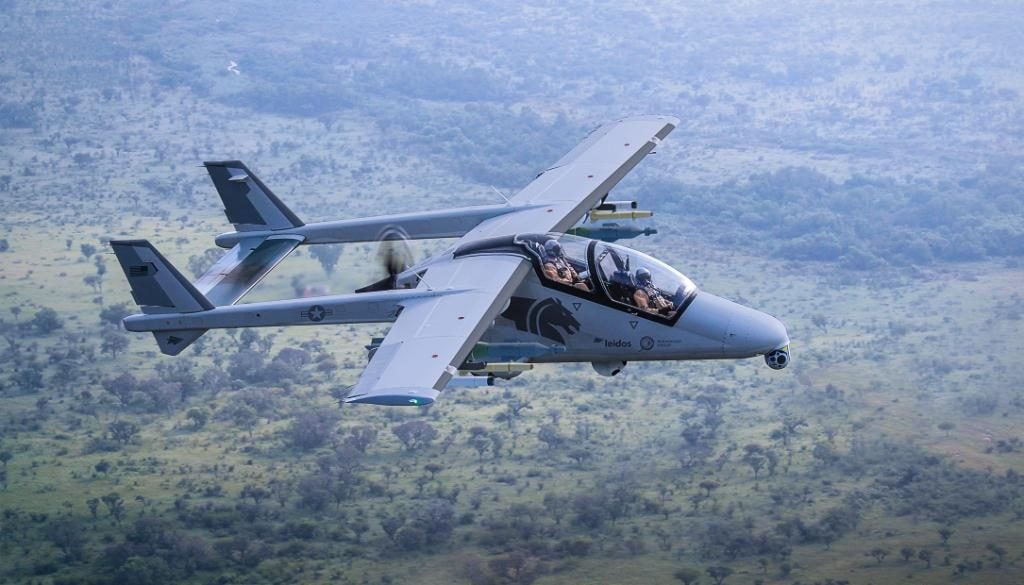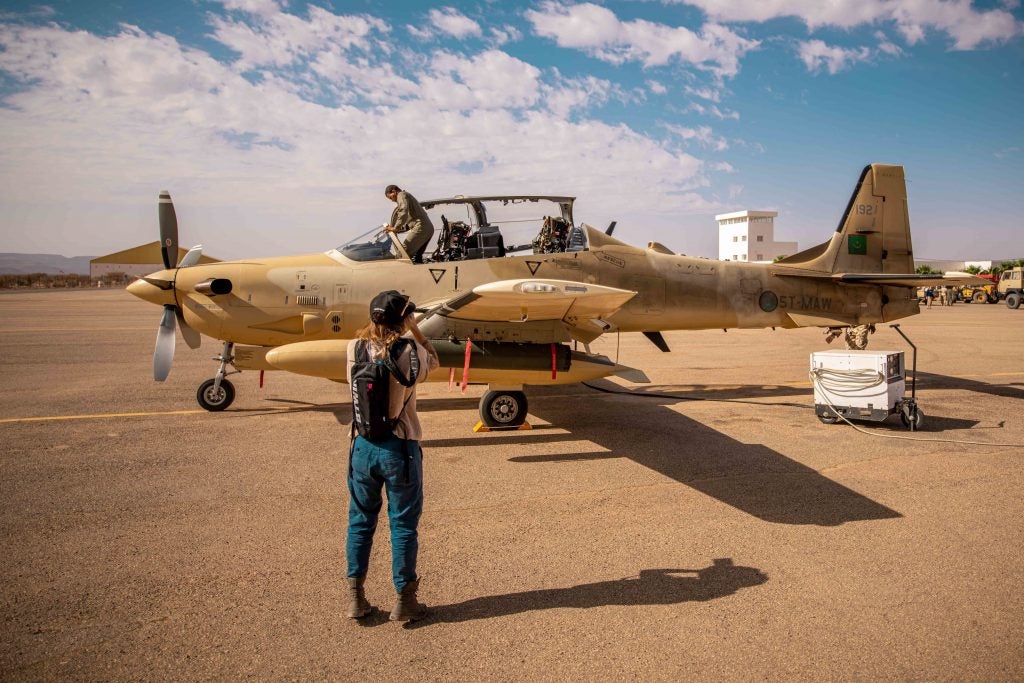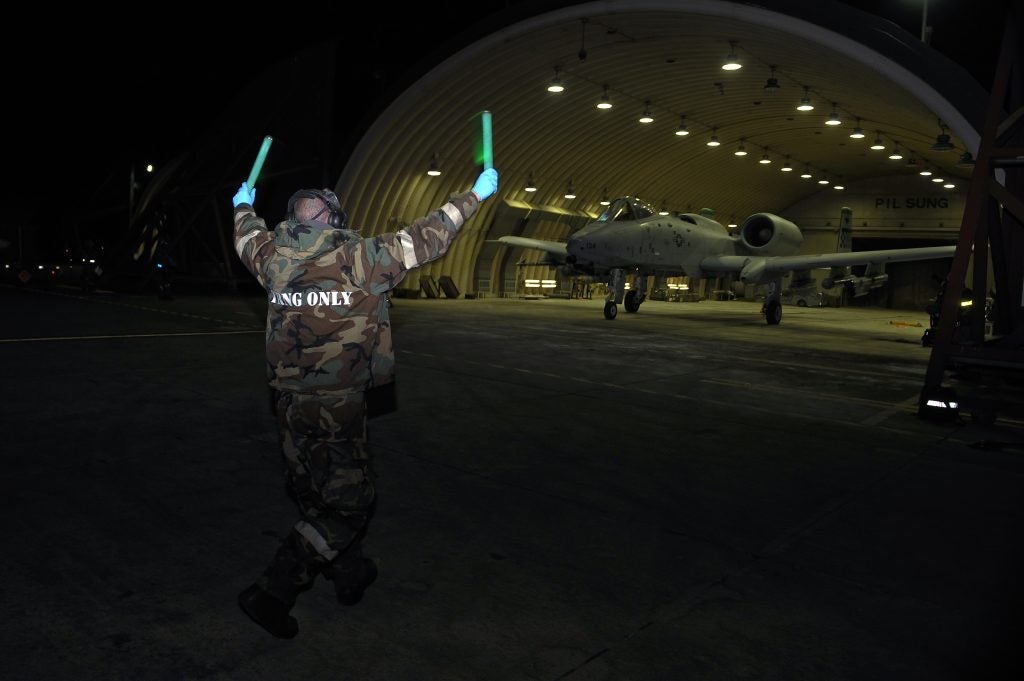No Funding For Armed Overwatch Aircraft In 2021 NDAA
The finalized version of the 2021 National Defense Authorization Act includes language prohibiting the Department of Defense from procuring any aircraft to meet US Special Operations Command’s Armed Overwatch requirements before an analysis of alternatives is conducted.

Section 175 of the 2021 NDAA, Prohibition On Purchase Of Armed Overwatch Aircraft, is as follows:
“The Secretary of the Air Force may not purchase any aircraft for the Air Force Special Operations Command for the purpose of “armed overwatch” until such time as the Chief of Staff of the Air Force certifies to the congressional defense committees that general purpose forces of the Air Force do not have the skill or capacity to provide close air support and armed overwatch to United States forces deployed operationally.”
Section 176, Special Operations Armed Overwatch, continues:
“None of the funds authorized to be appropriated by this Act for the Department of Defense may be used to acquire armed overwatch aircraft for the United States Special Operations Command, and the Department of Defense may not acquire armed overwatch aircraft for the United States Special Operations Command in fiscal year 2021.
Not later than July 1, 2021, the Secretary of Defense, in coordination with the Assistant Secretary of Defense for Special Operations and Low Intensity Conflict and the Commander of the United States Special Operations Command, shall conduct an analysis to define the special operations-peculiar requirements for armed overwatch aircraft and to determine whether acquisition of a new special operations-peculiar platform is the most cost effective means of fulfilling such requirements.”

A list of criteria required for the analysis of alternatives is then supplied. They are:
- a description of the concept of operations for employing armed overwatch aircraft in support of ground forces
- an identification of geographic regions in which armed overwatch aircraft could be deployed
- an identification of the most likely antiaircraft threats in geographic areas where armed overwatch aircraft will be deployed and possible countermeasures to defeat such threats
- a defined requirement for special operations-peculiar armed overwatch aircraft, including an identification of threshold and objective performance parameters for armed overwatch aircraft
- an analysis of alternatives comparing various manned and unmanned aircraft in the current aircraft inventory of the United States Special Operations Command and a new platform for meeting requirements for the armed overwatch mission, including for each alternative considered
- an identification of any necessary aircraft modifications and the associated cost
- the annual cost of operating and sustaining such aircraft
- an identification of any required military construction costs
- an explanation of how the acquisition of a new armed overwatch aircraft would impact the overall fleet of special operations-peculiar aircraft and the availability of aircrews and maintainers
- an explanation of why existing Air Force and United States Special Operations Command close air support and airborne intelligence capabilities are insufficient for the armed overwatch mission
- any other matters determined relevant by the Secretary of Defense.
The criteria listed is close to a complete checklist of the more common criticisms of the Armed Overwatch program, Light Attack/Armed Reconnaissance and other preceding programs that saw the USAF attempt to procure lightweight counter-insurgency aircraft for close air support in permissive environments. With the National Defense Strategy ostensibly focusing on peer conflicts with attendant surface-to-air threats, the place of a slow counter-insurgency craft in the military budget, and perhaps the place of “low and slow” close air support as a whole, has become ever more difficult to justify.

Still, it’s not all bad news for “low and slow” close air support, with Section 155 of the NDAA prohibiting retirement or divestiture of any A-10s during fiscal year 2021, “in order to ensure ongoing capabilities to counter violent extremism and provide close air support and combat search and rescue in accordance with the National Defense Strategy”.
Even so, it should be noted that most of what drives the A-10’s current relevance are improvements to its situational awareness that enhance its effectiveness in the combat search and rescue (CSAR) role, coupled with pilots specifically trained for the air-to ground mission. Even with rewinging efforts, the airframes can’t and won’t be airworthy forever. Certainly, the results of the Armed Overwatch analysis of alternatives will not dictate the future of the specialized close air support mission, but it’s difficult to not see how it won’t influence it.

